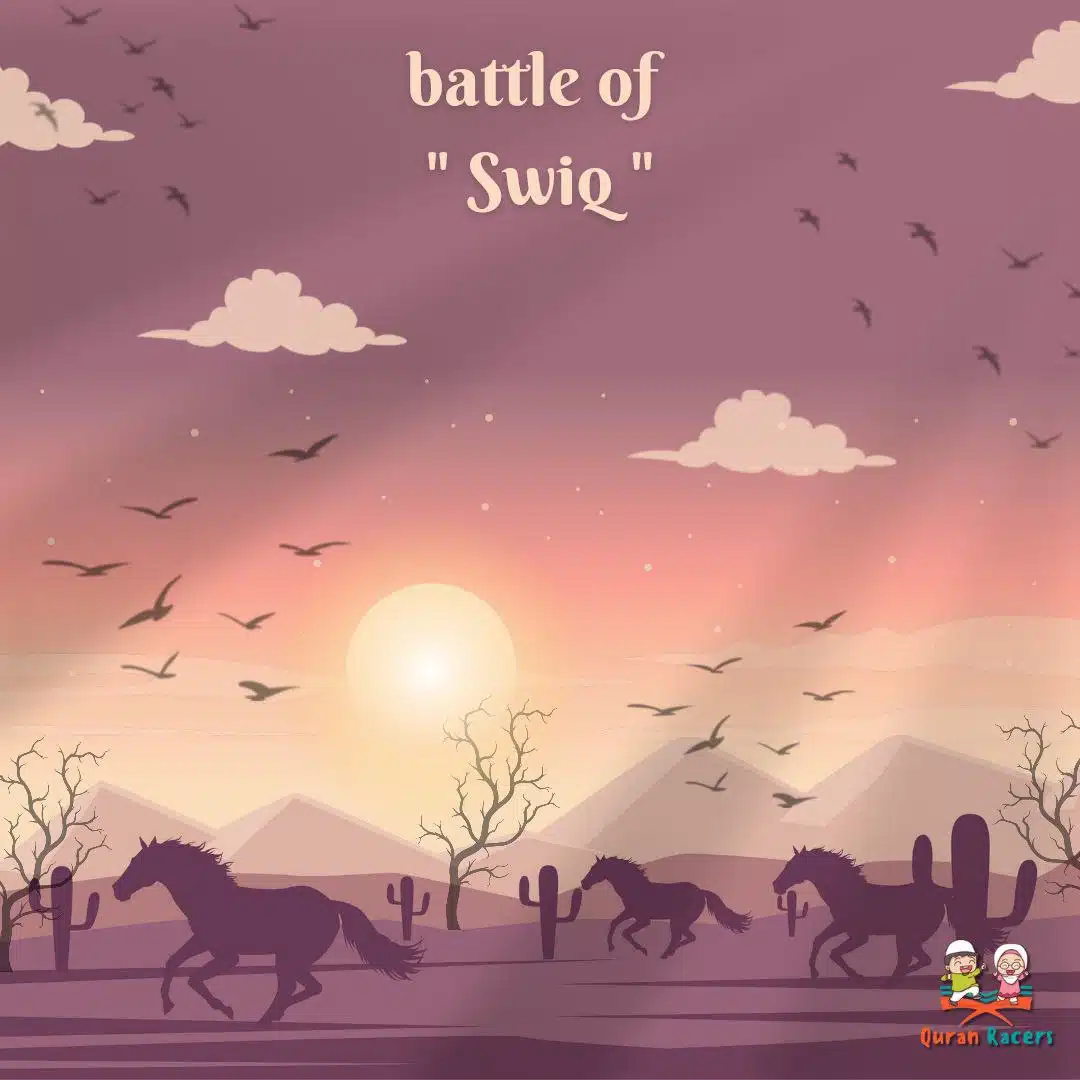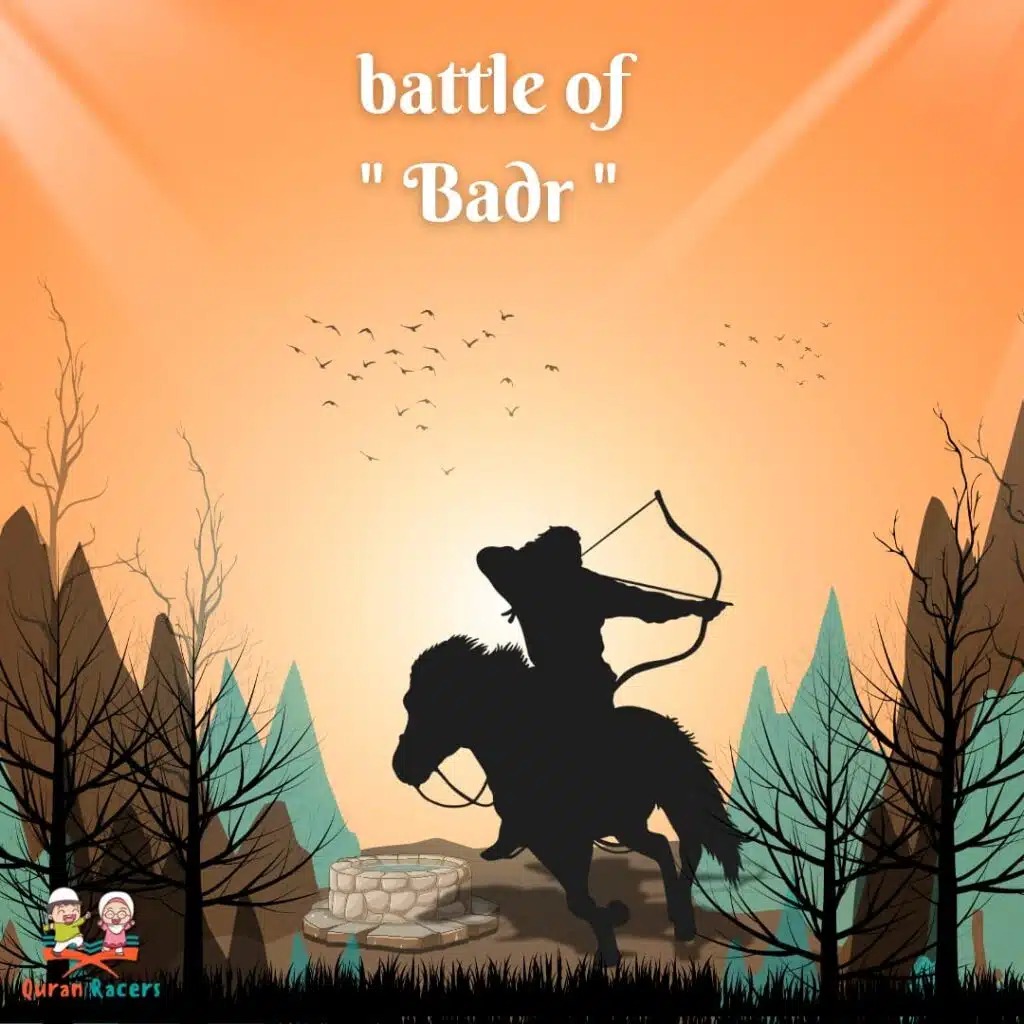The Burning Seeds of Revenge 🔥
📅 Year: 2 AH | Location: Outskirts of Madinah
🌟 Introduction: When Ashes Spoke of Defeat
The Battle of Sawiq was less of a battle and more of a message from Quraysh: “We’re not done yet.”
Just weeks after their humiliation at Badr, Abu Sufyan set out on a vengeful mission to harm the Muslims — not in open war, but in cowardly ambush.
But what he didn’t expect was that even small fires — like the Battle of Sawiq — would add fuel to the Muslim spirit and mark another failure for Quraysh.
😠 Quraysh Seeks Revenge After Badr
After the shocking defeat at Badr, Quraysh burned with rage. Abu Sufyan vowed he would not bathe until he avenged the loss.
So he gathered 200 horsemen, left Makkah, and crept near Madinah by night — striking at innocent farmers and burning fields.
Thus began the Battle of Sawiq, a raid born from humiliation, and destined for failure.
🌾 Why Was It Called the Battle of Sawiq?
During their retreat, the Quraysh threw away their food supplies — mainly large sacks of sawīq (barley meal) — to move faster.
The Muslims, led by the Prophet ﷺ in pursuit, found the scattered sawiq in the valley, and the raid became famously known as the Battle of Sawiq — the battle of barley flour.
So, even in their retreat, Quraysh left a mark of loss and shame.
🛡️ What Happened During the Battle of Sawiq?
Here’s what unfolded during the Battle of Sawiq:
-
Abu Sufyan killed two Muslims from the Ansar
-
He set fire to farms and palm groves on Madinah’s outskirts
-
Then he fled quickly before the Prophet ﷺ could intercept him
The Prophet ﷺ and a group of companions chased the enemy, but Quraysh had escaped.
Still, this incident showed how the Battle of Sawiq failed to achieve anything but further hatred from the Arabs toward Quraysh’s cowardice.
🧠 The Psychological Impact of the Battle of Sawiq
While there wasn’t a major clash, the Battle of Sawiq left behind deep meaning:
-
Quraysh showed desperation, not strength
-
The Muslims learned the value of constant readiness
-
Madinah’s people saw how Islam’s enemies targeted the weak, not the strong
The Battle showed that the path of truth isn’t just tested by swords — but by resilience against spiteful hate.
💡 Lessons from the Battle of Sawiq
-
Victory at Badr didn’t end the threat
-
Enemies often attack from shadows, not fields
-
Small incidents reveal big truths
-
The Prophet ﷺ always responded with calm pursuit, not blind rage
-
Even minor events can shape major resolve
-
Cowardice reveals the enemy’s weakness
Quraysh avoided direct confrontation — showing fear, not strength. -
Protection of civilians is part of Islamic leadership
The Prophet ﷺ didn’t just protect soldiers, but farmers and families too. -
Leadership means pursuing justice, not vengeance
The Prophet ﷺ taught us to act with purpose, not emotion.
The Battle of Sawiq proves that leadership is staying ready between the big moments.
🕌 Quran Racers Academy – Teaching Beyond the Major Wars
At Quran Racers, we use stories like the Battle of Sawiq to show students:
-
That not every battle is loud, but every event carries a message
-
That faith must remain alert even during peace
-
That revenge is never stronger than righteousness
We raise learners who understand that every challenge is a lesson, and every trial is an opportunity for growth.
🕊️ Conclusion: Quraysh Tried to Burn… But Got Burned Instead
The Battle of Sawiq was meant to bring fear — but only showed Quraysh’s failure.
They fled, they scattered, and they left behind nothing but ashes and barley.
But the Muslims? They stood tall, ready for the next chapter.
The Battl of Sawiq was more than a footnote in Seerah — it was a symbol of failed revenge and the unstoppable rise of Islam.













